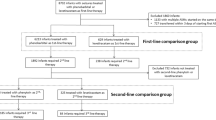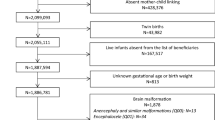Abstract
In pregnant women with epilepsy who are being treated with antiepileptic drugs (AEDs), careful clinical management is vital because seizure frequency can change during pregnancy, and both seizure activity and AED treatment can have consequences for the developing fetus. Complications of epilepsy and AED treatment include stillbirths, prematurity, low birth weight, major and minor malformations, and cognitive delay later in life. Certain AEDs probably have more adverse effects than others; data from prospective studies indicate that phenobarbital and valproate are associated with significant increases in major malformations, and retrospective studies show lower verbal IQs and greater need for extra assistance in school for children whose mothers received valproate during pregnancy. Monitoring of AED levels and dosage adjustment are warranted throughout pregnancy, and vitamin K1 at a dose of 10 mg/day should be given in the last month, particularly when cytochrome P450 enzyme-inducing AEDs are being administered. In the postpartum period, breastfeeding is recommended; however, there is differential transfer of individual AEDs in breast milk, and the infant should be observed clinically. For all women of reproductive age, preconceptual counseling is important, and includes optimization of the AED regimen and advising the mother to take supplemental folic acid.
This is a preview of subscription content, access via your institution
Access options
Subscribe to this journal
Receive 12 print issues and online access
$209.00 per year
only $17.42 per issue
Buy this article
- Purchase on Springer Link
- Instant access to full article PDF
Prices may be subject to local taxes which are calculated during checkout
Similar content being viewed by others
References
Foldvary-Schaefer N et al. (2004) Hormones and seizures. Cleve Clin J Med 71 (Suppl 2): S11–S18
Pennell P (2005) Using current evidence in selecting antiepilepsy drugs for use during pregnancy. Epilepsy Curr 5: 45–51
Hallak M et al. (1999) Fetal rat brain damage caused by maternal seizure activity: prevention by magnesium sulfate. Am J Obstet Gynecol 181: 828–834
Adab N et al. (2004) The longer term outcome of children born to mothers with epilepsy. J Neurol Neurosurg Psychiatry 75: 1575–1583
Nei M et al. (1998) A maternal complex partial seizure in labor can affect fetal heart rate. Neurology 51: 904–906
Sahoo S and Klein P (2005) Maternal complex partial seizure associated with fetal distress. Arch Neurol 62: 1304–1305
Vinten J et al. (2005) Neuropsychological effects of exposure to anticonvulsant medication in utero. Neurology 64: 949–954
Speidel BD and Meadow SR (1972) Maternal epilepsy and abnormalities of the fetus and newborn. Lancet 2: 839–843
Bjerkedal T and Bahna SL (1973) The course and outcome of pregnancy in women with epilepsy. Acta Obstet Gynecol Scand 52: 245–248
Olafsson E et al. (1998) Pregnancies of women with epilepsy: a population-based study in Iceland. Epilepsia 39: 887–892
Monson RR et al. (1973) Diphenylhydantoin and selected congenital malformations. N Engl J Med 289: 1049–1052
Hanson JW et al. (1976) Risks to the offspring of women treated with hydantoin anticonvulsants, with emphasis on the fetal hydantoin syndrome. J Pediatr 89: 662–668
Holmes LB et al. (2001) The teratogenicity of anticonvulsant drugs. N Engl J Med 344: 1132–1138
Lindhout D et al. (1992) Antiepileptic drugs and teratogenesis in two consecutive cohorts: changes in prescription policy paralleled by changes in pattern of malformations. Neurology 42 (Suppl 5): S94–S110
Nakane Y (1979) Congenital malformation among infants of epileptic mothers treated during pregnancy—the report of a collaborative study group in Japan. Folia Psychiatr Neurol Jpn 33: 363–369
Artama M et al. (2005) Antiepileptic drug use of women with epilepsy and congenital malformations in offspring. Neurology 64: 1874–1878
Holmes LB et al. (2004) The AED (antiepileptic drug) pregnancy registry: a 6-year experience. Arch Neurol 61: 673–678
Wyszynski DF et al. (2005) Increased rate of major malformations in offspring exposed to valproate during pregnancy. Neurology 64: 961–965
Vajda FJ et al. (2003) The Australian registry of anti-epileptic drugs in pregnancy: experience after 30 months. J Clin Neurosci 10: 543–549
Vajda FJ et al. (2004) Critical relationship between sodium valproate dose and human teratogenicity: results of the Australian register of anti-epileptic drugs in pregnancy. J Clin Neurosci 11: 854–858
Vajda F et al. (2004) Australian pregnancy registry of women taking antiepileptic drugs. Epilepsia 45: 1466
Vajda FJ and Eadie MJ (2005) Maternal valproate dosage and foetal malformations. Acta Neurol Scand 112: 137–143
Morrow JI et al. (2005) Malformation risks of anti-epileptic drugs in pregnancy: a prospective study from the UK Epilepsy and Pregnancy Register. J Neurol Neurosurg Psychiatry 77: 193–198
Russell AJ et al. (2004) U.K. epilepsy and pregnancy group. Epilepsia 45: 1467
Tomson T et al. (2004) EURAP: an international registry of antiepileptic drugs and pregnancy. Epilepsia 45: 1463–1464
Cunnington M and Tennis P (2005) Lamotrigine and the risk of malformations in pregnancy. Neurology 64: 955–960
Matalon S et al. (2002) The teratogenic effect of carbamazepine: a meta-analysis of 1255 exposures. Reprod Toxicol 16: 9–17
Rosa FW (1991) Spina bifida in infants of women treated with carbamazepine during pregnancy. N Engl J Med 324: 674–677
Hernandez-Diaz S et al. (2001) Neural tube defects in relation to use of folic acid antagonists during pregnancy. Am J Epidemiol 153: 961–968
Montouris G (2005) Safety of the newer antiepileptic drug oxcarbazepine during pregnancy. Curr Med Res Opin 21: 693–701
Montouris G (2003) Gabapentin exposure in human pregnancy: results from the Gabapentin Pregnancy Registry. Epilepsy Behav 4: 310–317
Long L (2003) Levetiracetam monotherapy during pregnancy: a case series. Epilepsy Behav 4: 447–448
Kondo T et al. (1996) Preliminary report on teratogenic effects of zonisamide in the offspring of treated women with epilepsy. Epilepsia 37: 1242–1244
Pennell PB (2003) The importance of monotherapy in pregnancy. Neurology 60 (Suppl 4): S31–S38
Holmes LB et al. (2005) The correlation of deficits in IQ with midface and digit hypoplasia in children exposed in utero to anticonvulsant drugs. J Pediatr 146: 118–122
Gaily E et al. (2004) Normal intelligence in children with prenatal exposure to carbamazepine. Neurology 62: 28–32
Adab N et al. (2001) Additional educational needs in children born to mothers with epilepsy. J Neurol Neurosurg Psychiatry 70: 15–21
Reinisch JM et al. (1995) In utero exposure to phenobarbital and intelligence deficits in adult men. JAMA 274: 1518–1525
Eriksson K et al. (2005) Children exposed to valproate in utero—population based evaluation of risks and confounding factors for long-term neurocognitive development. Epilepsy Res 65: 189–200
Meador K et al. (2005) Differential and dose dependent effects of in utero antiepileptic drugs [abstract #427]. Neurology 64 (Suppl 1): aS62.002
Bahado-Singh RO and Sutton-Riley J (2004) Biochemical screening for congenital defects. Obstet Gynecol Clin North Am 31: 857–872
Fong KW et al. (2004) Detection of fetal structural abnormalities with US during early pregnancy. Radiographics 24: 157–174
Pennell PB et al. (2004) The impact of pregnancy and childbirth on the metabolism of lamotrigine. Neurology 62: 292–295
Petrenaite V et al. (2005) Individual changes in lamotrigine plasma concentrations during pregnancy. Epilepsy Res 65: 185–188
Choulika S et al. (2004) Is antenatal vitamin K prophylaxis needed for pregnant women taking anticonvulsants? Am J Obstet Gynecol 190: 882–883
Kaaja E et al. (2002) Enzyme-inducing antiepileptic drugs in pregnancy and the risk of bleeding in the neonate. Neurology 58: 549–553
Astedt B (1995) Antenatal drugs affecting vitamin K status of the fetus and the newborn. Semin Thromb Hemost 21: 364–370
[No authors listed] (1998) Practice parameter: management issues for women with epilepsy (summary statement). Report of the Quality Standards Subcommittee of the American Academy of Neurology. Epilepsia 39: 1226–1231
Pennell PB (2003) Antiepileptic drug pharmacokinetics during pregnancy and lactation. Neurology 61 (Suppl 2): S35–S42
Liporace J et al. (2004) Concerns regarding lamotrigine and breast-feeding. Epilepsy Behav 5: 102–105
Johannessen SI et al. (2005) Levetiracetam concentrations in serum and in breast milk at birth and during lactation. Epilepsia 46: 775–777
Ohman I et al. (2002) Topiramate kinetics during delivery, lactation, and in the neonate: preliminary observations. Epilepsia 43: 1157–1160
Ohman I et al. (2005) Pharmacokinetics of gabapentin during delivery, in the neonatal period, and lactation: does a fetal accumulation occur during pregnancy? Epilepsia 46: 1621–1624
Author information
Authors and Affiliations
Corresponding author
Ethics declarations
Competing interests
The author declares no competing financial interests.
Rights and permissions
About this article
Cite this article
Pack, A. Therapy Insight: clinical management of pregnant women with epilepsy. Nat Rev Neurol 2, 190–200 (2006). https://doi.org/10.1038/ncpneuro0153
Received:
Accepted:
Issue Date:
DOI: https://doi.org/10.1038/ncpneuro0153
This article is cited by
-
Management of women with epilepsy: from preconception to post-partum
Archives of Gynecology and Obstetrics (2016)



